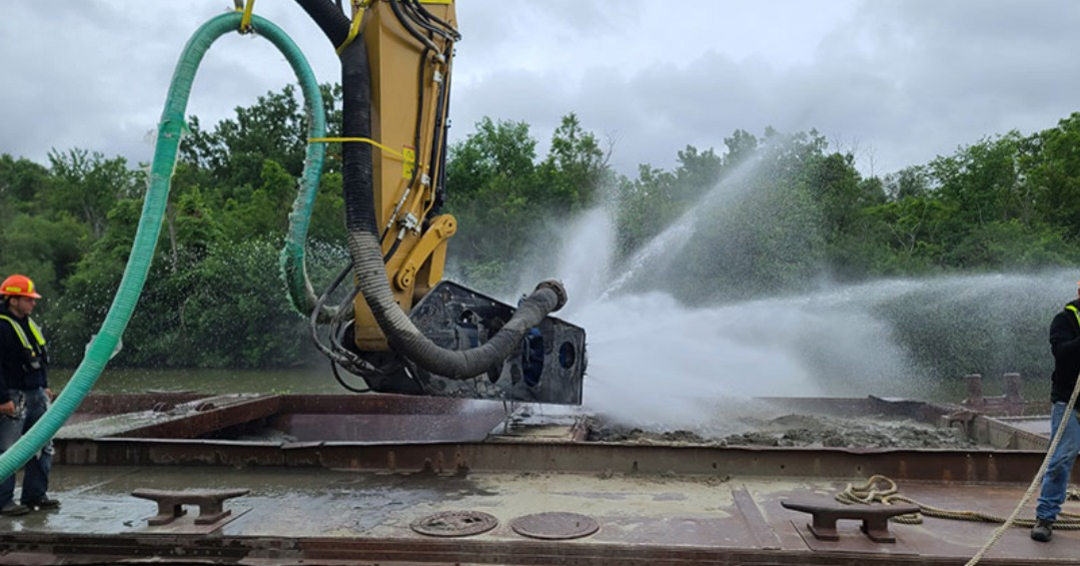EDDY Submersible Slurry Pump with Jetting Ring Attachment Provides Great Results for Mare Island Dry Dock Project.
The Mare Island Dry Dock in Vallejo, California provides services for cruise ships, coastal tankers & barges, ferries, Military Sealift Command (MSC), US Coast Guard, US Navy, NOAA, Commercial Freighters & Bulk Carriers, and provides vessel berthing for repair and retrofit. For two years, it has used an EDDY pump to offload flat bottom barges with loads of up to 100,000 cubic yards.

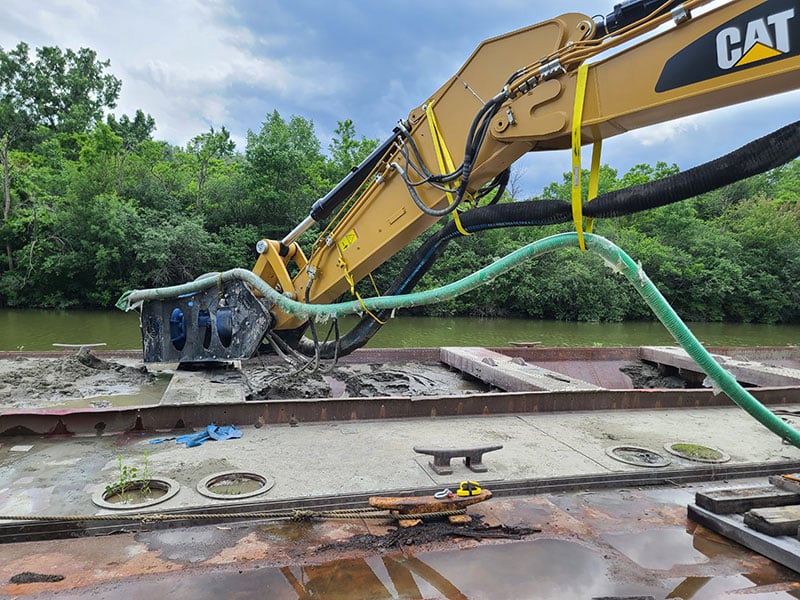
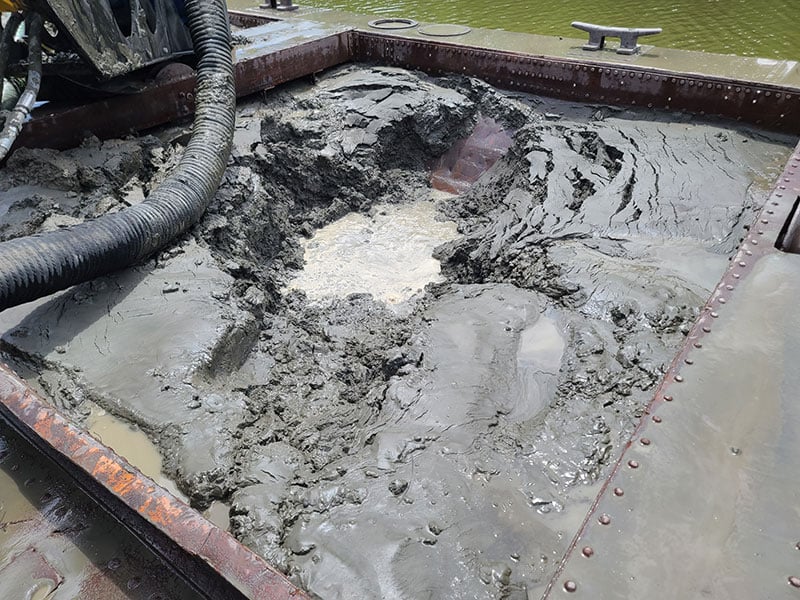
The Challenge
Mare Island Dry Dock’s barge offload requirements by the disposal site had recently changed from a mechanical offload (clamshell bucket over the levee) to being required to offload hydraulically into the disposal site.
“We contacted Eddy Pump and found out that they would be willing to rent us a unit so that we could try the system, said Mare Island Dry Dock Environmental Coordinator Marcus Zuidema. “Since our offload is only a few weeks during the dredge cycle, and we had not done this before, this was a good trial solution for us.”
Mare Island’s water pump sizing is much smaller than other dredge pumps.
“Currently, we use a Godwin HL150 to supply jet ring water and even at that we can cut down the water supply to increase the production rate if we are pushed for time by the next barge,” Zuidema said. “Currently, we are pumping 650 feet into a disposal pond through a 10-inch High-Density Polyethylene (HDPE).”
Mechanical method converts to PUMP instead
The EDDY Pump Solution
Mare Island Dry Dock installed the EDDY pump and has experienced favorable results.
“We have had very little trouble with the pump,” Zuidema said. “The only downtime was when a piece of metal got pulled up inside the suction chamber and broke the impeller, and that wasn’t really a design fault on the pump end.”
EDDY Pump Corporation helped Mare Island Dry Dock to redesign the jetting ring a few times to maximize the offload production. “Their efforts were focused on maximizing pressure at the nozzle while limiting the flow. This is where we saw the best balance,” Zuidema said.
Zuidema said that the best feature of the EDDY Pump is the low maintenance interaction required. “We spend time keeping fluids filled on all the other equipment, but the EDDY Pump just runs and pumps the mud. It is very easy to operate.”
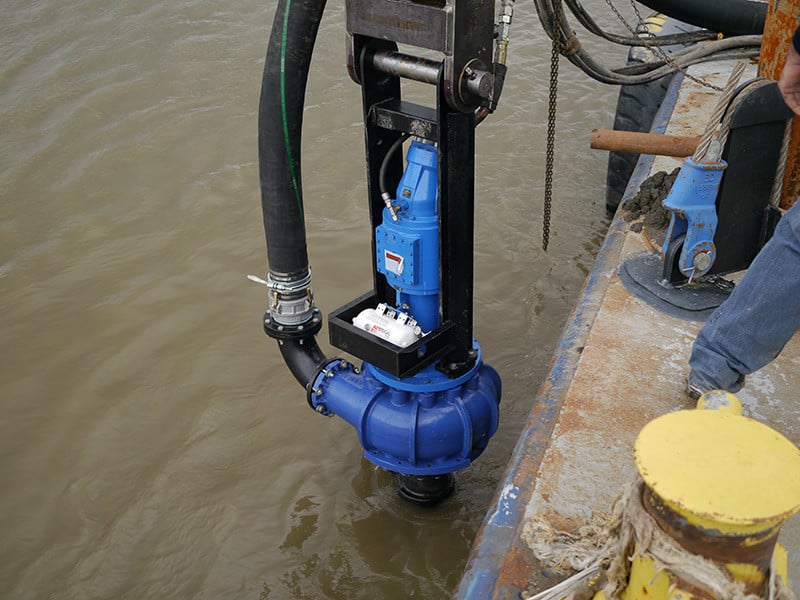
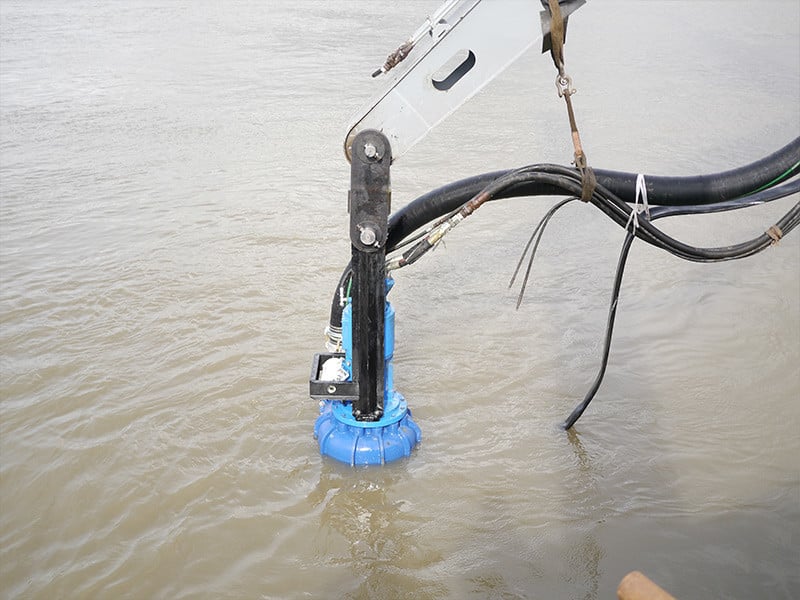
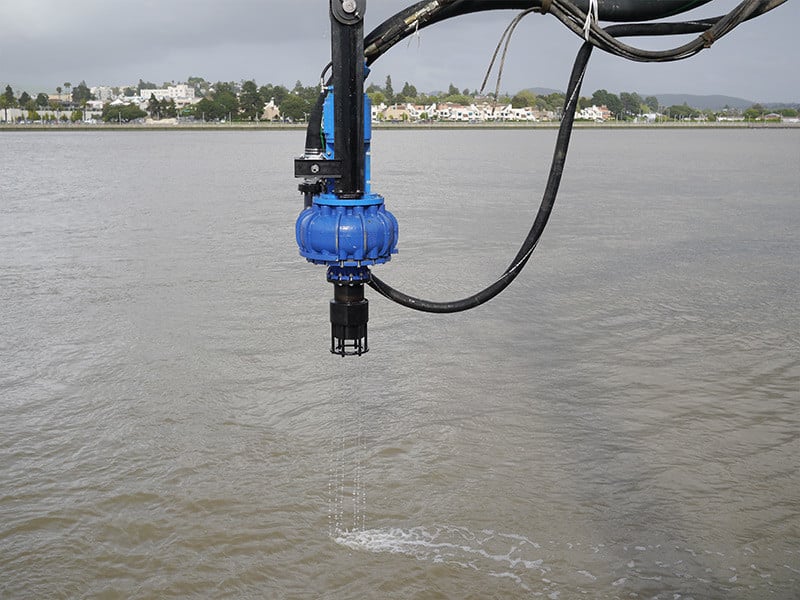
How EDDY Pump Technology Works
The Cable Deployed EDDY Pump with Water Jetting Agitator is barge or excavator mountable. EDDY Pump’s submersible electric and hydraulic driven dredge pump, with water jetting ring agitator option, is a market leader in high solids pumping. Unlike other dredge pumps, the EDDY Pump design does not have an impeller, but instead a heavy-duty geometrically designed rotor that creates a synchronized eddy current similar to a tornado.
The EDDY Pump Submersible dredge pump with water jetting ring can be attached by cable and suspended from a crane, excavator, floating barge with a-frame, or other devices for optimal solids pumping. The high chrome EDDY Pump will outperform any pump on the market while not clogging like conventional pumps or having downtime associated with maintaining critical tolerances.
This cable deployed dredge pump setup can be fitted with 4-inch through 12-inch pumps. The production measures at 100-450 cubic yards per hour of material, at distances of more than 2,000 feet. The water jetting ring can be configured in ways to break up the most consolidated material while feeding the EDDY Pump.
This pump can unload a barge with boom deployment, or it can be hung from a cable, A-frame on a floating barge, or from an excavator boom.
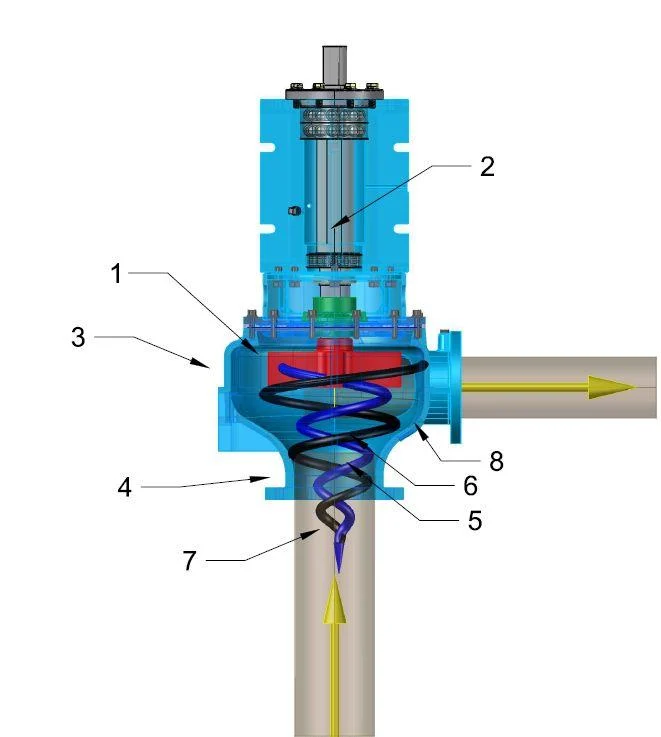
The EDDY Pump consists of:
(1) energy generating rotor attached to the end of a
(2) drive shaft and placed within a
(3) volute. . As the rotor begins to spin, it sets into motion the ambient fluid present within the volute and
(4) adjoining intake chamber. At normal operating speed, this spinning fluid is forced down, into the hollow center of the intake chamber where it creates a high speed, swirling synchronized column of fluid
(5) which agitates the material
(6) to be pumped (sludge, sand, clay etc.) This swirling column of fluid creates a peripheral
(7) “eddy” effect which causes the agitated material to travel by reverse flow, up along the sides of the intake chamber, into the volute. Here the material, under pressure from below, is forced into the
(8) discharge pipe.
Project Results
“So far, we have offloaded about 100,000 cubic yards with the same pump and really don’t have any complaints about it,” Zuidema said. “Because of our permits, we are clamshell dredging maintenance material and hydraulically offloading the material at the disposal pond. As far as barge retain, we are offloading flat bottom barges and when the pump gets down to between 6” to 12” it is very hard to keep the prime on the pump.”
The secret to getting as much as possible out of the flat bottom barge, Zuidema explained, is to work from one end of the barge to the other and use a fire monitor to push the mud toward the raked side of the barge.
“This not only provides a slope for the mud to move on, it also provides some volume for the pump to operate it,” he said. “It dilutes the consistency of the mud, making it easier to keep the prime on the pump. This is how we clean out the barges, as well. Restarting the prime on the pump typically requires getting the bell of the pump submerged in the mud. If we have any difficulty with this, we clear the line by submerging the pump in water, pumping the water through the line and then go back into the barge. We only lose prime when the mud level gets low.”
EDDY Pump Corporation, founded in 1984, is a dredge equipment and slurry pump manufacturer, along with being an engineering company. We are committed to providing the most innovative solids-handling pump technology and service to fit the needs of our clients worldwide.
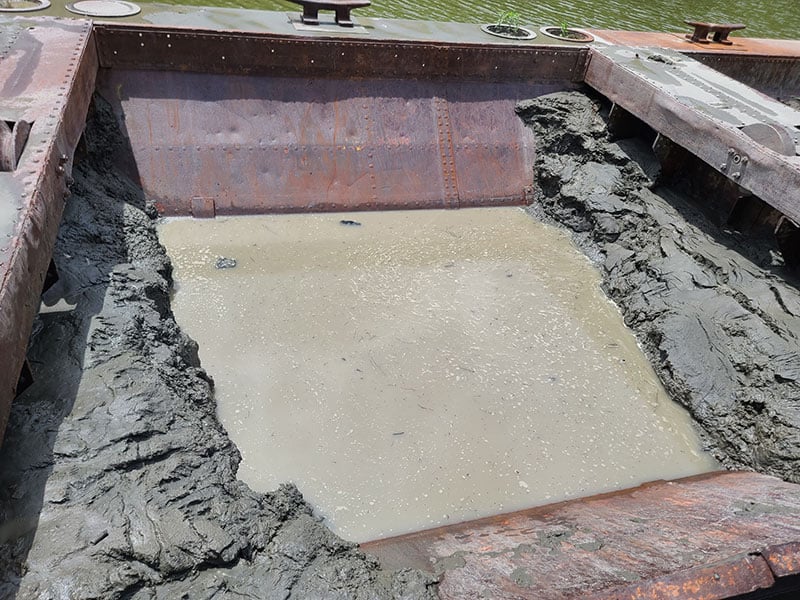
Shared by EDDY Pump Corporation
